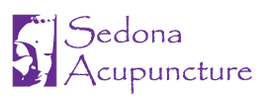THANK YOU, ARIZONA. YOU HAVE VOTED ME BEST ACUPUNCTURIST FOR THE 14TH YEAR IN A ROW!










SERVICES
Chinese Medicine
Originating over 3000 years ago, Traditional Chinese Medicine (TCM) is presently used as a primary healthcare system for more than one-third of the world’s population. It is a method of balancing and building the body’s life force or energy known as QI.
TCM views a person as an energy system in which body and mind are unified, each influencing and balancing the other. Unlike Western medicine which attempts to isolate and separate a disease from a person, Chinese Medicine emphasizes a holistic approach that treats the whole person.
I make a Chinese medical diagnosis based upon a thorough examination and consultation. The examination includes the assessment of the pulse and tongue and observation of the patient’s facial color.
Acupuncture
Acupuncturists recognize particular pathways called “meridians” through which the QI energy circulates, connecting all the major organs and glands with the skin surface.
Traditional Chinese Medicine views disease as result of an imbalance or blockage in the body’s natural QI energy flow. Such imbalance manifests in physical, emotional and psychosomatic stress-related disorders.
Acupuncture points are areas of electrical sensitivity that have been shown to be effective in the treatment of specific health problems. They have been mapped out by the Chinese over a period of 3000-4000 years. Very thin, sterile, stainless steel needles are inserted into specific points along the meridians in order to disperse the blockage and mobilize the body’s natural immune response.
I have studied many styles of acupuncture over the years with some of the greatest Masters alive; I incorporate aspects of all of them in my treatments. These include TCM, Tibetan, Japanese, Korean and Tung (Taiwanese) acupuncture and Five Element constitutional acupuncture.
Needling is only one of a number of energy balancing techniques used in Traditional Chinese Medicine. Also included in traditional therapies are dietary counseling, various Oriental massage techniques, herbal remedies, cupping, and moxibustion.
Acupuncture has been scientifically shown to assist in self-healing by reducing pain and inflammation, strengthening organ function and balancing hormones – including endorphins and brain neuro-transmitters.
Herbology
Herbology is traditionally one of the more important modalities utilized in Traditional Chinese Medicine (TCM). Each herbal medicine prescription is a cocktail of many herbs tailored to the individual patient. The practitioner usually designs a remedy using one or two main ingredients that target the illness. Then the practitioner adds many other ingredients to adjust the formula to the patient’s conditions. These steps require great experience and knowledge, and make the difference between a good Chinese herbal doctor and an amateur.
Unlike western medications, the balance and interaction of all the ingredients are considered more important than the effect of individual ingredients. A key to success in TCM is the treatment of each patient as an individual. At Sedona Acupuncture, we carry over 200 safe powders, capsules, pills, and tinctures.
Cupping
Cupping is an ancient Chinese method, and was widely practiced in Europe up to the 20th century. Cups are placed on the skin and a partial vacuum is created, either by means of heat or suction, to draw up the underlying tissues. When the cup is left in place on the skin for a few minutes, stagnation-like soreness in stiff muscles will be released, and localized healing takes place. Cupping therapy has been further developed as a means to open the QI meridians (energy pathways) of the body.
Cupping has also been found to affect the body up to four inches under the skin, causing tissues to release toxins, activate the lymphatic system, clear the veins, arteries and capillaries, and increase circulation at the skin’s cellular level.
Moxibustion
Moxibustion is a traditional Chinese medical technique that involves the burning of Mongolian Mugwort (Artemesia Vulgaris), a small, spongy herb, to facilitate healing. Moxibustion has been used throughout Asia for thousands of years; in fact, the actual Chinese character for Acupuncture, Zhenjiu (针灸) translates literally as “acupuncture-moxibustion.” Moxa is used to warm the meridians, stimulate the flow of QI, and maintain general health.
Tui-Na
Tui-Na is a unique type of Chinese medicinal massage, consisting of brushing, kneading, rolling, pressing and rubbing specific areas of the body to open the body’s defensive (WeiQi) energies, and get the QI moving in both the meridians and the muscles. It is typically applied to painful joints, muscles, tendons and connective tissue.